#gelugpa
Text
Gyuto Karmapa Temple - Discover the Spiritual Oasis | Mysterious Himachal
Nestled amidst the serene landscapes of Dharamshala, Himachal Pradesh, the Gyuto Karmapa Temple, also known as the Gyuto Monastery, stands as a testament to spiritual enlightenment and tranquillity. This mystical sanctuary, belonging to the Gelugpa lineage of Tibetan Buddhism, offers a unique and enriching experience for visitors seeking solace and a deeper understanding of Tibetan culture and…
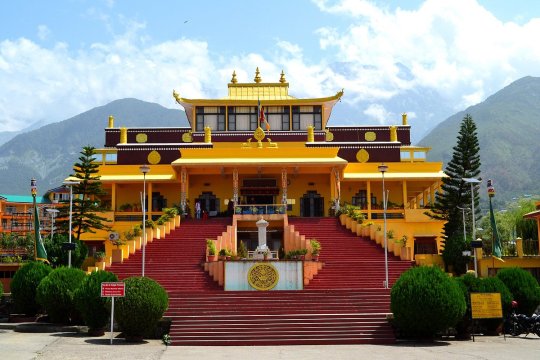
View On WordPress
#17th century#Dharmshala#Gelugpa lineage#Gyuto Karmapa Temple#Gyuto Monastery#Karma Kagyu lineage#Karmapa#sidbhari#Tibetan Buddhism
0 notes
Text
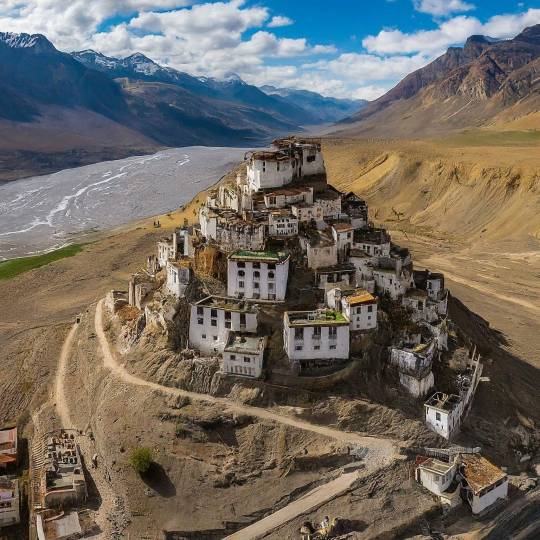
Himhimalayas
Key monastery
Wikipedia
Kye Gompa (Tibetan: དཀྱིལ་དགོན་, Wylie: dkyil dgon; also spelled Kyi, Ki, Key, or Kee; pronounced like the English word key) is a Tibetan Buddhist monastery of the Gelugpa sect located on top of a hill at an altitude of 4,166 metres (13,668 ft) above sea level, close to the Spiti River, in the Spiti Valley of Himachal Pradesh, Lahaul and Spiti district, India.
59 notes
·
View notes
Text

Key Monastery, Spiti Valley, Himachal Pradesh, India: Kye Gompa is a Tibetan Buddhist monastery of the Gelugpa sect located on top of a hill at an altitude of 4,166 meters above sea level, close to the Spiti River, in the Spiti Valley of Himachal Pradesh, Lahaul and Spiti district, India. Wikipedia
24 notes
·
View notes
Text
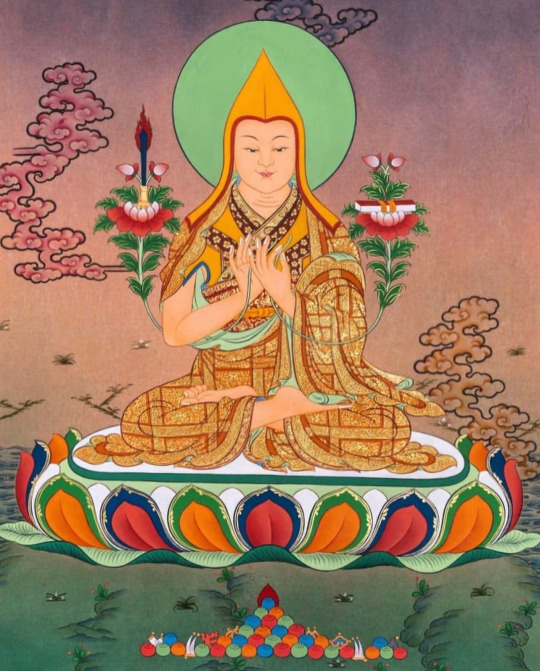
"The first step in attaining happiness is to cultivate tranquility of mind. And how do we cultivate tranquility? Normally, the mind in filled with all sorts of negative emotions which prevent tranquility. I once saw a book titled "You Must Calm Down," and without even reading it, I knew that whatever it has to say about tranquility, it won't work, because if you feel like you
"must" do something, you won't be able to relax. We often tell people to "calm down," but it doesn't work if we don't also tell them how to calm down. If you just tell yourself to calm down, without actually knowing how to do it, it won't work. To attain inner tranquility.you have to start to change ways of thinking...this has nothing to do with religion...and whether or not you do it is entirely up to you." - Khangser Rinpoche [teaching on Shamatha (calm abiding) and Lojong (Mind Training)]
Khangser Rinpoche presently serves as a spiritual teacher at Sera Jey Monastic University, one of the three great Monastic Universities affiliated with the Gelugpa tradition which follows the rich culture and knowledge of the ancient Nalanda University, established in Tibet in 15th century. He also teaches Buddhism according to Nyingma and Kagyu traditions at several Nyingma and Kagyu monasteries in Dharamsala, India and Nepal. His ancestors followed the Nyingma tradition for centuries. Since Rinpoche's line of reincarnations is affiliated with the Gelug tradition, he possesses both precious heritages.
Image: Je Tsongkhapa
#buddha#buddhism#buddhist#dharma#sangha#mahayana#zen#milarepa#tibetan buddhism#thich nhat hanh#padmasambhava#Guru Rinpoche#Longchenpa
4 notes
·
View notes
Text
i did not realise until reading this propagandum from the tibetan government that the infamous Rdorjeshugsidan/Dorje Shugden/Dolgyal/Gyalchen Shugden is an apotheosised version of the 17th century Gelug lama Tulku Drakpa Gyaltsen, who was a student of the Gelugpa founder Je "Leekvale" Tsongkhapa, Drakpa being a rival of the Dalai Lama at the time, who lost the power struggle so much that his incarnation lineage was suppressed. This suppression is presumably turned into repression, and his propitiation in Sith form.
explains a lot rly
6 notes
·
View notes
Text
5. Tag: Tashilhunpo Monastery
Das Kloster Tashilhunpo in Shigatse, der zweitgrößten Stadt in Tibet, ist eine der größten aktiven religiösen Einrichtungen. Das Kloster wurde 1447 vom ersten Dalai Lama errichtet und ist eines der sechs großen Gelugpa-Klöster. Dieses Kloster ist die offizielle Residenz der Panchen-Lamas und somit ein wichtiges buddhistisches Zentrum für die zahlreichen Pilger. Die Tempelanlage ist riesig und beherbergt viele schöne Statuen, Stupa-Kultbauten und Gemälde. Das bemerkenswerteste Kunstwerk ist eine riesige Maitreya-Buddhastatue aus Gold, verziert mit Diamanten, Perlen und anderen Edelsteinen. Mit einer Höhe von 26 Metern ist sie die größte vergoldete Figur der Welt. Interessant sind auch die in den Kapellen befindlichen Stupas der historischen Panche-Lamas. Im Kloster Tashilhunpo steht der größte Buddha des Landes. Der Tempel ist riesig und man kann viele Einheimische und Mönche im Alltag beobachten. Besonderheiten des Klosters sind auch die Stupas der verschiedenen Panchen Lamas. Leider auch hier war das fotografieren nicht erlaubt.
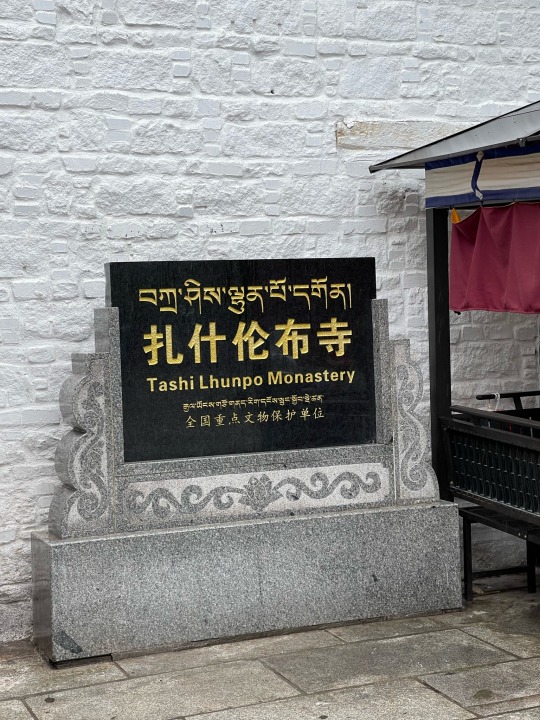
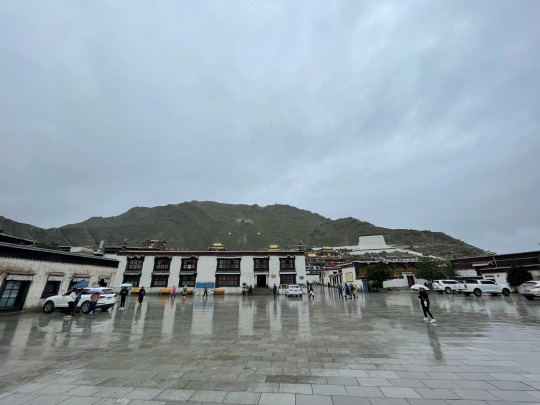
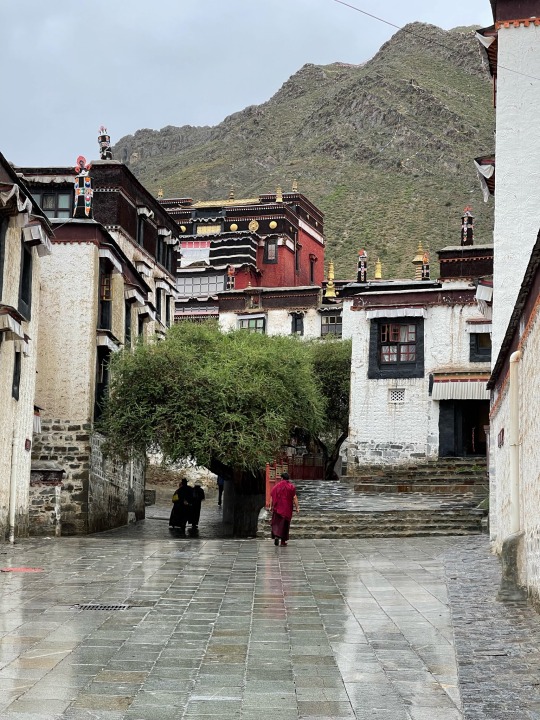


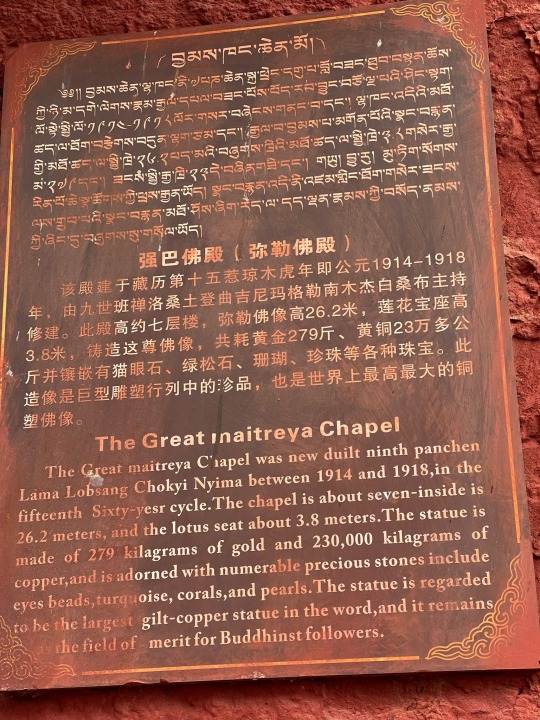

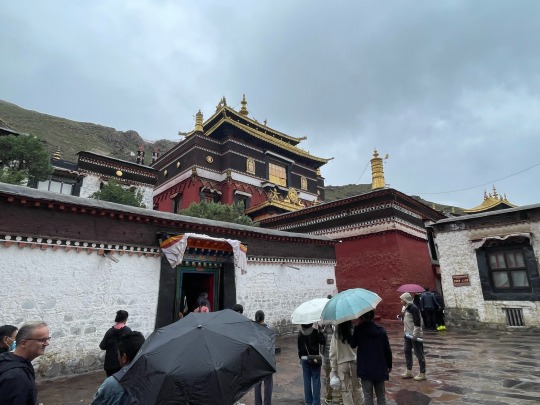
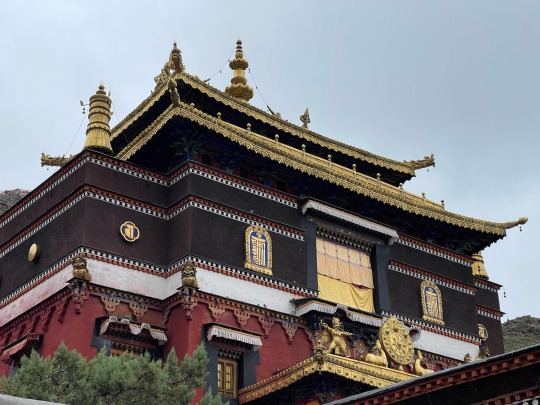
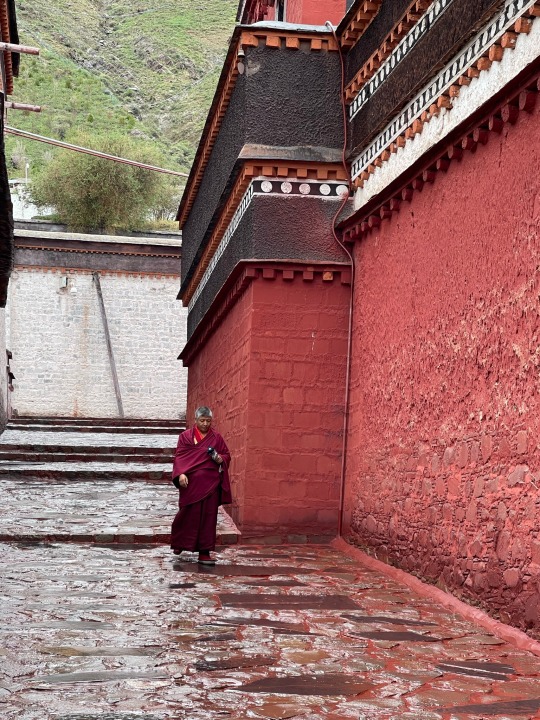
2 notes
·
View notes
Text
I learned about the deity Palden Lhamo for the first time today and I’m amazed.

“Palden Lhamo means "Glorious Goddess" and can feature a wide range of wrathful female protectors and dakinis. Usually, Palden Lhamo refers to the Gelugpa version of her as a wrathful emanation of Saraswati, otherwise known as Magzor Gyalmo and Remati.
Magzor Gyalmo was said to be named Remati during the time she was married to the evil king of Lanka, both of them rakshasas according to one version. Remati vowed that if she failed to convert the king to Buddhism and dispel his wickedness, she would end his dynasty. She tried many times to convert him to avoiding the killing of dharma practitioners, but failed along with their son being raised to kill Buddhists. With no choice, she slaughtered her son while her husband was out hunting. She ate her son's flesh, drank his blood with his skull as a kapala or cup, and flayed his skin to make a saddle. Thus, she escaped out towards the north. Just as she left on a mule, the king returned and found out about his son's murder. Enraged, he shot the rump of the mule that Remati was riding. In response, Remati healed the wound and transformed it into an eye by stating, "May the wound of my mount become an eye large enough to watch over the twenty-four regions, and may I myself be the one to extirpate the lineage of the malignant kings of Lanka!" There, she traveled onwards through India to Tibet to China to Mongolia and was said to have finally settled down on the mountain, Oikhan in eastern Siberia.
When she died, she was reborn in hell and fought her way out of the hell, stealing a bag of diseases and a sword. When she escaped to the charnel grounds, she found no peace and prayed to the Buddha for a reason to live. The Buddha Vajradhara (tantric Shakyamuni) appeared before her and requested her to protect the dharma. Astonished, Remati agreed and thus arose as the dharmapala she is, only using her weapons against enemies of Buddhism. She was also appointed as a guardian of dharma by Yama, lord of death. Her retinue consists of the lion-headed dakini Simhamukha (Sengdongma) behind her and the Makara-headed dakini Makaravaktra holding the reins of the mule in front of Palden Lhamo. Surrounding them are the 4 Goddesses of the Seasons, the 5 Sisters of Long Life, and the 12 Tenma goddesses.”
16 notes
·
View notes
Text
Each of the four main schools of Tibetan Buddhism (Nyingma, Sakya, Kagyu, and Gelug) has its own Refuge Tree to display the lineage of its masters. The Refuge Tree is important to the practitioner not only as a support for the practice known as “going for refuge,” in which a commitment to the path is made before the vast lineage of teachers, but also as an object of visualization and meditation, practices that nourish faith, inspire efforts, and impart blessings for spiritual progress.
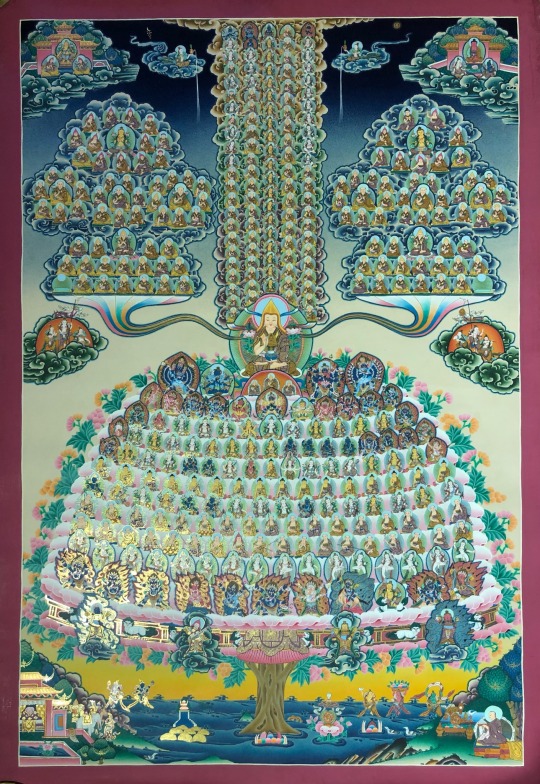
In this Gelugpa Refuge Tree Tsongkhapa, who is the founder of the lineage, is surrounded by a host of figures of refuge, including bodhisattvas, meditation deities (Tib. yidams), and guardians. Directly above Tsongkhapa’s head, the succession of lineage gurus is portrayed, culminating with the central blue figure at the top, Vajradhara, the Primordial Buddha, who is the ultimate source of refuge within the Gelugpa tradition.
.
.
.
.
.
#tsongkhapa #refugetree #bodhisattva #yidam #buddha #spiritual #meditation #visualization #tibetan #buddhism #thangka #lamathankapaintingschool #thankapainting #livingheritage #heritage #mindfullness #compassion #mahakala #bodhisattva #guardiankings #himalayanart
6 notes
·
View notes
Text
Exploring the Sacred Sites of Ladakh: Stongdey, Phugtal, and Rizong Monasteries

Ladakh, often referred to as "Little Tibet," is a region in northern India renowned for its stunning landscapes, unique culture, and spiritual heritage. Among the numerous monasteries in Ladakh dotting this high-altitude desert, Stongdey, Phugtal Monastery, and Rizong stand out for their historical significance and architectural splendor. This article delves into the rich history and cultural importance of these three monasteries, offering a glimpse into Ladakh's profound spiritual tapestry.
Stongdey Monastery: A Beacon of Tranquility

Perched on a hilltop in the remote Zanskar Valley, Stongdey Monastery in Ladakh is one of the most significant religious sites in Ladakh. Founded in the 11th century by Lama Marpa Lotsawa, a disciple of the famous Tibetan yogi Milarepa, Stongdey is a prominent institution of the Kagyu sect of Tibetan Buddhism.
The monastery complex comprises several temples adorned with intricate frescoes and statues that depict various deities and scenes from Buddhist scriptures. The main prayer hall houses a magnificent statue of Avalokiteshvara, the Bodhisattva of Compassion, embodying the monastery's serene and meditative ambiance. Stongdey Monastery also serves as a center for Buddhist learning, with monks engaged in rigorous study and meditation.
Visitors to Stongdey are often struck by its breathtaking views of the surrounding mountains and valleys, which add to the spiritual experience. The monastery's annual festival, Stongdey Gustor, attracts pilgrims and tourists alike, featuring vibrant mask dances and traditional rituals.
Phugtal Monastery: The Cave of Meditation

Nestled in a remote corner of the Lungnak Valley, Phugtal Monastery is one of the most isolated and unique monastic sites in Ladakh. Built around a natural cave on a cliffside, the monastery appears to be suspended in mid-air, blending seamlessly with the rugged terrain. The name "Phugtal" translates to "cave of liberation," reflecting its purpose as a place for deep meditation and spiritual retreat.
Phugtal was founded in the 12th century by the Tibetan scholar Zanskar Rinchen Zangpo. The monastery's main hall is adorned with ancient murals and statues, and the cave itself is believed to have been visited by numerous Buddhist saints and scholars, adding to its mystical aura.
Reaching Phugtal Monastery is an adventure in itself, requiring a trek through challenging landscapes. However, the journey is richly rewarded with the monastery's serene environment and the opportunity to experience the monastic way of life up close. The monks at Phugtal continue to follow a traditional lifestyle, devoted to study, meditation, and community service.
Rizong Monastery: The Hermit’s Paradise
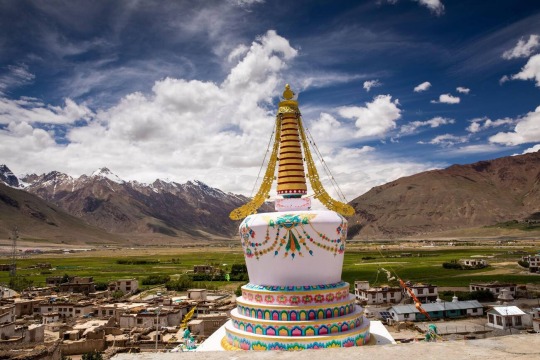
Rizong Monastery, located in the Indus Valley near the village of Uletokpo, is known as the "Paradise for Meditation." Established in 1831 by Lama Tsultim Nima, Rizong belongs to the Gelugpa sect of Tibetan Buddhism, the same school as the Dalai Lama.
Rizong is renowned for its strict monastic discipline and ascetic practices. The monks lead a hermitic lifestyle, focusing intensely on meditation and spiritual practices. The monastery complex includes several temples, a nunnery, and a meditation center, all set against the backdrop of rugged mountains and pristine natural beauty.
Visitors to Rizong are often impressed by the monastery’s peaceful atmosphere and the dedication of its inhabitants. The nearby nunnery, known as Chulichan, offers a glimpse into the lives of the nuns who follow similar ascetic practices.
Conclusion

Stongdey, Phugtal, and Rizong monasteries are more than just religious sites; they are living embodiments of Ladakh’s rich spiritual heritage. Each monastery, with its unique history, architecture, and cultural significance, offers a profound insight into the Buddhist way of life. For those seeking spiritual solace, historical knowledge, or simply the beauty of human devotion in harmony with nature, a visit to these monasteries provides an unforgettable experience. The journey to these sacred spaces not only enriches one's understanding of Buddhism but also inspires a deeper connection with the timeless tranquility of Ladakh.
0 notes
Text
Buu Long Pagoda, Ho Chi Minh City, Vietnam
March 2, 2024
Buu Long Pagoda, a Theravada Buddhism Temple, was voted as one of the top 20 most stunning pagodas in the world. The pagoda’s architecture is an amalgamation of Thai and Indian pagodas combined with that of Nguyen Dynasty.
The Theravada School of Buddhism is the oldest and most orthodox of Buddhism’s three major sects. The other two sects are: Mahayana Buddhism, which split from Theravada over doctrinal differences; and Tantric or Esoteric Buddhism (an offshoot of Mahayana Buddhism), also known as Tibetan Buddhism, which is commonly associated with the Dalia Lama who is the spiritual leader of one of the better renowned (Gelugpa School) of the four major schools of Tibetan Buddhism. There are many schools (subgroups) of Buddhism (e.g., Zen Buddhism) within each sect.
While each sect of Buddhism is guided by different monastic laws (with minor differences in schools within each sect), all believe in practicing Buddha's Noble Eightfold Path to seek enlightenment and reach nirvana by overcoming greed, unhappiness and the need for worldly desires; they just differ on how to go about getting there.
Buddhists do not consider Gautama Buddha to have been the only Buddha. The Pali Canon (the first book documenting the Buddha’s teachings about 400 years after his death) refers to many previous Buddhas, while the Mahayana tradition additionally has many Buddhas of celestial origin.
Buddhists also pay homage to Maitreya, the 29th Buddha (the future Buddha), who is expected to appear to guide the wayward and the misguided to enlightenment when the Dharma (the teachings of the Buddha) will have been forgotten in the terrestrial world – akin to the second-coming belief of one of the Abrahamic religions.
Long = Dragon and Buu = Precious in the Vietnamese language. With all the ornate dragons on the stairways, this temple certainly deserved to be named Buu Long (Precious Dragon).
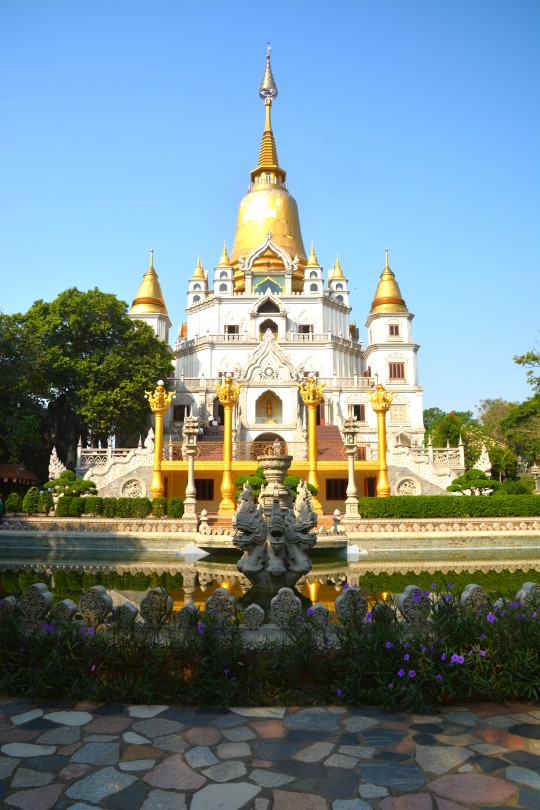




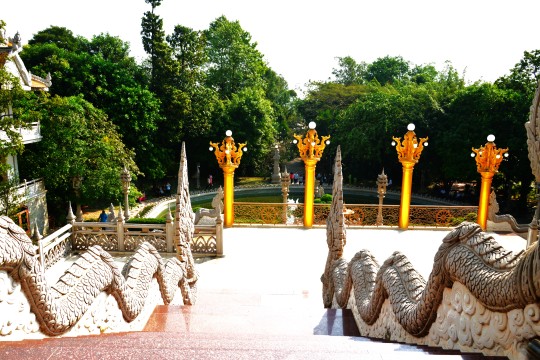
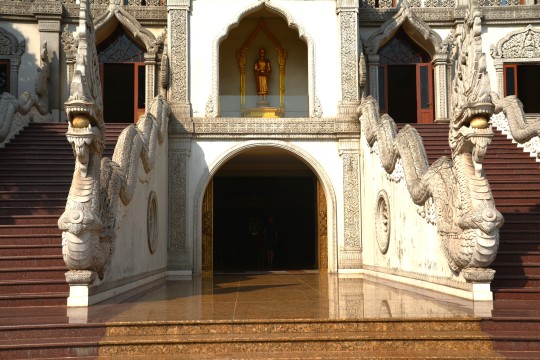
On the first floor, underneath the statue of the Buddha is a portrait of the chief monk...

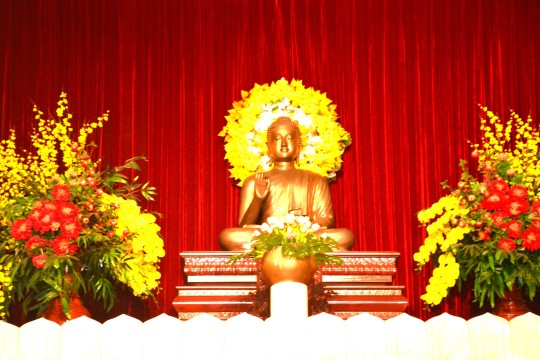

and a wind chime on the first floor...

Buddha on the second floor surrounded by his first 5 disciples...

the head monk's chair...
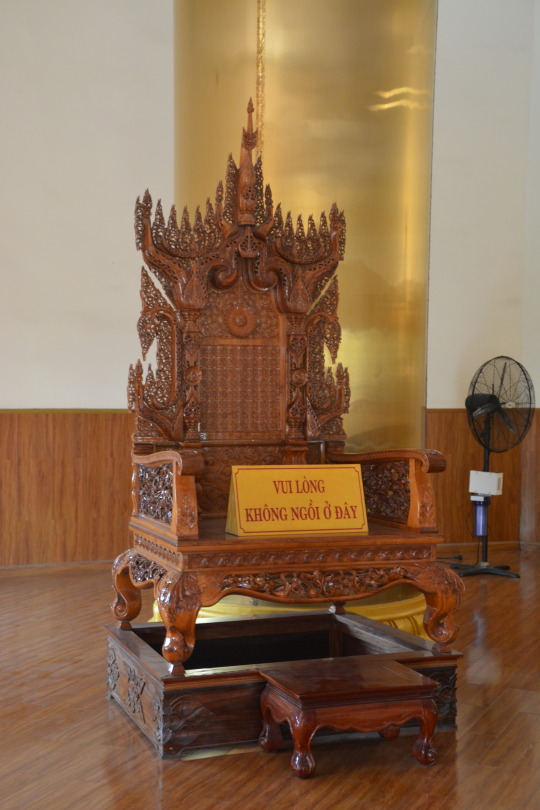
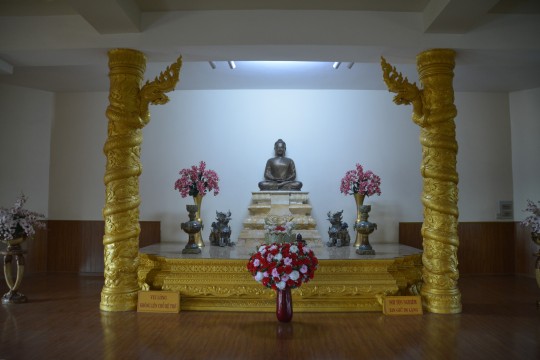
...and the 3rd floor chapel.

I struck up a conversation with this novice monk, who appears to be 15 or 16 years old. He told me that through his meditation and following Buddha's teachings, he has managed to considerably reduce his negative feelings and has become more serene. He thinks he will be ready to become a full-fledged monk in about a year.
He spoke broken, but understandable English, though with long pauses between words as he grappled to translate into English his thoughts in the Vietnamese language. I could almost see the machinery in his brain churning the translation wheels. He seemed pleased to practice his English-speaking skills.
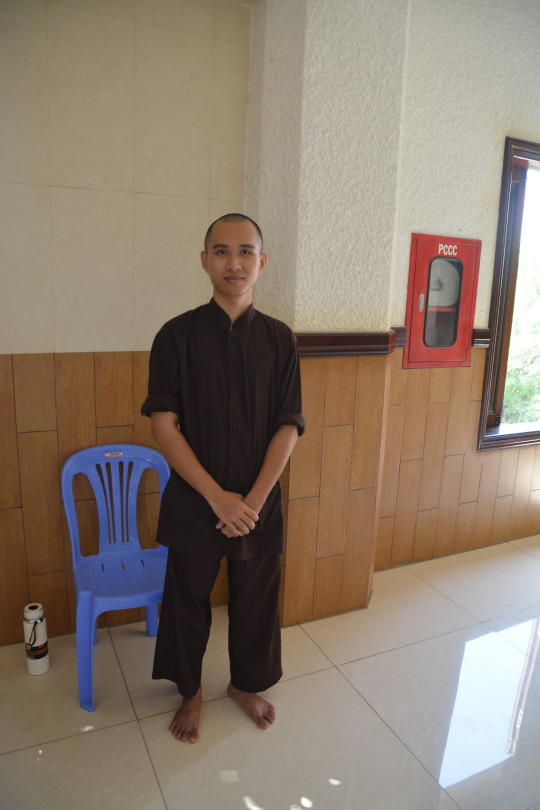
0 notes
Text

MEDITATION IS NOT A BURDEN, SHENPA IS A BURDEN
One of the obstacles modern dharma students face is their resistance to meditating. But this observation isn’t meant as a criticism. In this present degenerated time, your interest in hearing the dharma is so wonderful; the effort you make to take notes on what you hear is so wonderful. Nevertheless, if we don’t meditate, not only do we not get enlightened, but also our knowledge of buddhadharma is stunted.
Meditation sharpens our questions, and also sharpens our doubts. For now, our doubt is rather pathetic, but meditation sharpens our dull and stupid doubt into valuable and profound doubt.
Earlier I was critiquing the Nyingmapas and Kagyupas; now it’s the Gelugpas’ and Sakyapas’ turn: their practise of meditation appears to be in decline. They are so in love with study and argument and expounding that unfortunately meditation is not a high priority; unfortunate because meditation is so crucial to progressing along the path.
In Tibetan culture, it is drilled into monks and lamas like me to favour reading, rituals and pujas above meditation, and sadly, younger monks even tend to smirk at the mention of meditation, dismissing it as a practise that Westerners do.
This seminar is intended to be a retreat of sorts. In Tibetan, the word for retreat is tsam, which means to stay within a boundary. Ideally in retreat, we are not supposed to cross the boundary outside presentness by straying into the past or the future.
In order to meditate, one needs to, in effect, draw a boundary of retreat around oneself to isolate or confine body and mind. Sure, we can isolate ourselves by going to the mountains or the forest. Sitting under a tree or in a cave in solitude can be a great boost. But isolation need not mean only retreating into literal solitude.
The essence of lü wen or isolating our body is embedded in the very act of sitting up straight in Vairocana’s 7-point posture, thereby isolating ourselves from our bodily urges such as the urge to scratch, the urge to yawn and the urge to fidget.
If our phone rings, we don’t make a sound. If we conveniently remember leaving a window open, we don’t move a muscle. Instead of shooing away a mosquito on our nose for fear of malaria, we leave it alone.
Basically, we isolate ourselves in the sense that we shun our pet distractions, and expose our insecurities in the process. No matter how wild our mind might get, all we do at this point is continue to sit, because since our body is confined, mind will always find its own way back.
Sitting still, we breathe in and out as usual. In most Tibetan meditation instructions, unlike Burmese or Sri Lankan style, our eyes remain open, readying us for Tantric practise in the future.
So we may blink as necessary. And we may swallow saliva as necessary. Otherwise, we do nothing else whatsoever. Please yawn, scratch and squirm now before we begin. For the next twenty minutes we will meditate. Do not yield to bodily impulses. And if your mind gets anxious for the time to be over, just watch that mind of impatience.
Are we ready? Starting now.
Parting from the Four Attachments
Sachen Kunga Nyingpo’s Lojong Shenpa Shidrel
The Mind-training of Parting from the Four Attachments
With commentary by Dzongsar Jamyang Khyentse Rinpoche
Given at the International Buddhist Academy
Boudha, Kathmandu, Nepal
June 2-11, 2009
Arranged according to Jetsün Trakpa Gyaltsen’s commentary
Siddhartha’s Intent International
SI Canada, SI Western Door, SI Europe, SI Hong Kong, SI Taiwan,
SI Australia, SI India, SI Bhutan, SI Mexico, SI Japan
© 2012 by Siddhartha’s Intent
https://siddharthasintent.org/publications/parting-from-the-four-attachments/
0 notes
Text
Gelugpas are so annoying... Why are y'all like that. Just let people live, like god damn
0 notes
Text
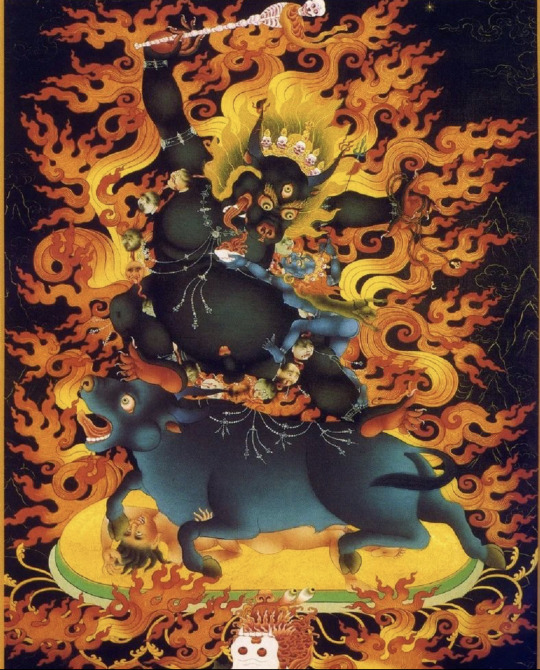
Dharma Protectors of Tibetan Buddhism
Kalarupa is found throughout all the Kagyu, Sakya, and Gelug traditions as a special protector associated with the Vajrabhairava Yamantaka Tantras. He is said to be the protector who Lama Tsongkhapa chose for the Gelugpa lineage, and as such, it is practised throughout all Gelugpa monasteries and institutions.
He is depicted with his consort Chamundi
As the protector of the Small Scope of Lam Rim, Kalarupa is the protector of those who observe the law of karma, or cause and effect in their spiritual practice, as he observes both their wholesome and unwholesome actions. Similar to the roles of other Dharma protectors who guard specific teachings, Kalarupa protects Yamantaka practitioners from obstacles arising from their own karma. In addition, he assists by creating conducive conditions for the practice of Yamantaka in order for practitioners to gain high realisations and ultimately enlightenment. This role also includes protecting the teachings from being lost or abused.
---
To cause yourself and your life to be intensely filled with happiness, do everything you can to give happiness to others.
Do all the good you can. By all the means you can. In all the ways you can. In all the places you can. At all the times you can. To all the people you can.
As long as ever you can.
May you be well and happy my friends.
I am grateful for your interest in Dharma and following my blog.
Any mistakes are solely my own and not the fault with the Dharma or masters quoted here.
#buddha#buddhist#buddhism#dharma#sangha#mahayana#zen#milarepa#tibetan buddhism#thich nhat hanh#dhammapada#karma#mindfulness#dakini#four noble truths#pure land#equanimity#avalokitesvara#manjushri#bodhisattva#tsongkhapa#green tara#padmasambhava#atisha#amitabha#shantideva#vajrasattva#vajrayogini#vajrapani#medicine buddha
2 notes
·
View notes
Photo
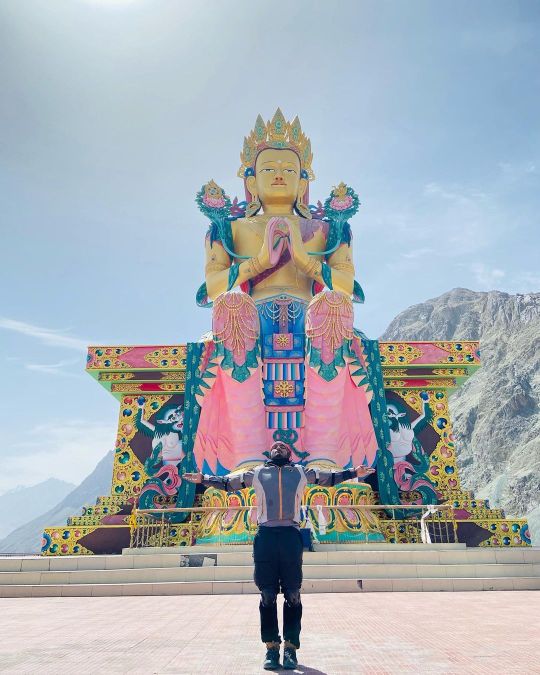
Diskit Monastery also known as Deskit Gompa or Diskit Gompa is the oldest and largest Buddhist monastery (gompa) in the Nubra Valley of Ladakh, northern India. It belongs to the Gelugpa (Yellow Hat) sect of Tibetan Buddhism. It was founded by Changzem Tserab Zangpo, a disciple of Tsong Khapa, founder of Gelugpa, in the 14th century. It is a sub-gompa of the Thikse gompa. #diskitmonastery #travellerfromkarnataka #kannadiga #storiesofindia #indiaclicks #incredibleindia #hungrytrippers #ladakhtourism #ladakh #ladakhbiketrip #ladakhdiariesbeauty #ladakhdiariesgreat #traveler #travelcommunity #travelholic #himachal #himachaltourism #himachalpradesh #himachaldiaries #himachalpictures #mountains #nubravalley #himalayandiaries #zanskar #manalidiaries #pangong #lehladakh #leh #ladakhtourism #ladakhtrip (at Diskit - दिस्कित, Ladakh) https://www.instagram.com/p/Cgg2qeVvSCm/?igshid=NGJjMDIxMWI=
#diskitmonastery#travellerfromkarnataka#kannadiga#storiesofindia#indiaclicks#incredibleindia#hungrytrippers#ladakhtourism#ladakh#ladakhbiketrip#ladakhdiariesbeauty#ladakhdiariesgreat#traveler#travelcommunity#travelholic#himachal#himachaltourism#himachalpradesh#himachaldiaries#himachalpictures#mountains#nubravalley#himalayandiaries#zanskar#manalidiaries#pangong#lehladakh#leh#ladakhtrip
0 notes
Text
Unsere erste Besichtigung das Drepung Monastery. Drepung ist eines der bedeutendsten Klöster der Gelug-Schule und war eines der drei großen so genannten „Staatsklöster“ des früheren Tibet, nicht ganz 10 km westlich von Lhasa gelegen. Drepung wurde 1416 von Jamyang Chöje Trashi Palden – einem Schüler des Tsongkhapa, des Begründers des Gelug-Ordens – gegründet. Es zählt zu den drei Eliteklöstern der Gelugpa. Drepung war Sitz des Dalai-Lamas bis zur Fertigstellung des Potala. Der 5. Dalai-Lama lebte im Hauptpalast des Klosters und verstarb auch dort. Wir besichtigten seine Residenzräume sowie die Grabmäler des 2. und 3. Dalai-Lama. Zur Zeit des 5. Dalai-Lama lebten etwa 10 000 Mönche dort, momentan sind es etwa nur noch 600 Mönche. Drepung war einst das größte und reichste Kloster Tibets und galt als Ausbildungsstätte in verschiedenen wissenschaftlichen Disziplinen, beispielsweise in der tibetischen Medizin.



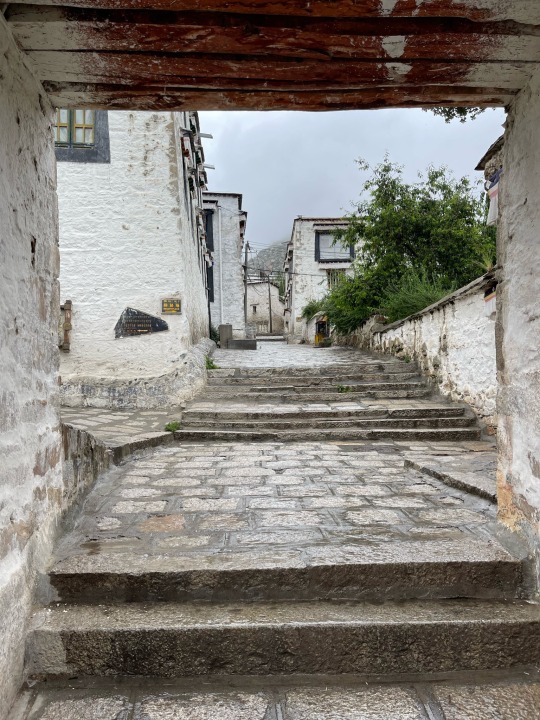
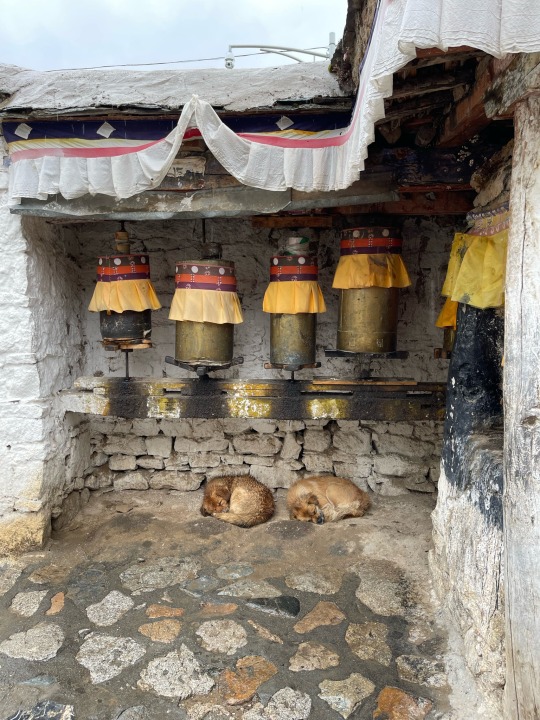
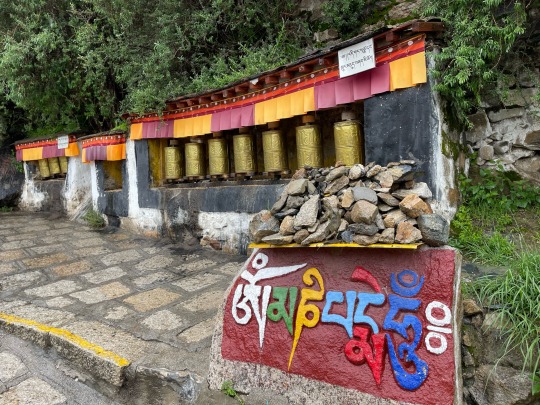
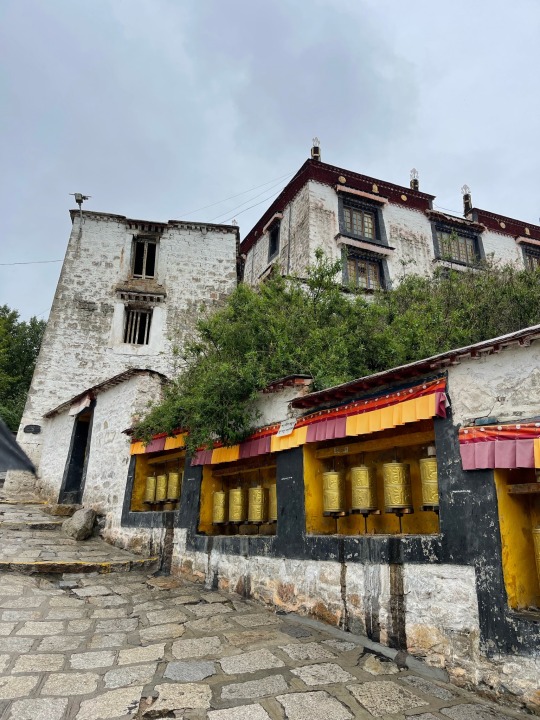



2 notes
·
View notes
Photo
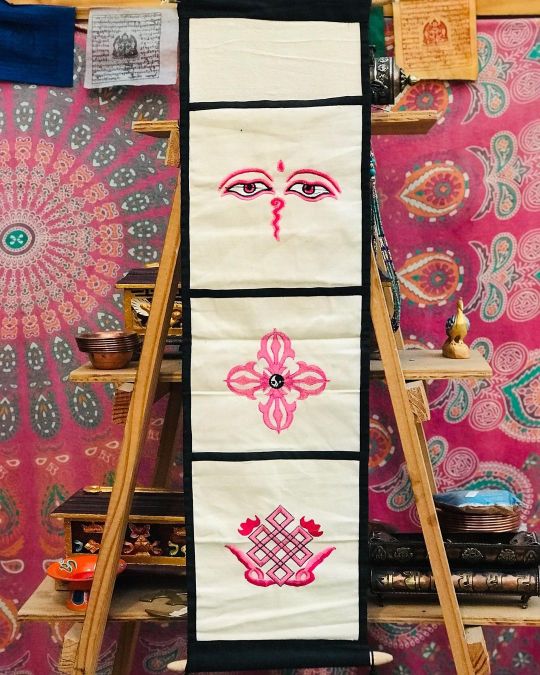
Colgantes Budistas Bordados. Hecho en Nepal. Tienen 3 bolsillos bordaos con simbología sagrada y de protección: ojos de Buda, Vishvavajra y Nudo Infinito. Son para colgar a muro en espacios sagrados o altar. En los bolsillos puedes guardar documentos, inciensos, sadhanas, etc. Valor: • $16.000 Con cualquier medio de pago, opción 3 cuotas sin interés en nuestra casa tienda (ñuñoa). $20 USD Paypal accepted. Agenda visita +56984112891. Busca en Waze o google maps “el tercer ojo”. Envíos a todo Chile y fuera de Chile. #tiendaeltercerojo #colgantesbudistas #buddhistwallhanging #simbologiasagrada #nudoinfinito #dpalbeu #srivatsa #visvavajra #buddhaeyes #ojosdebuda #sadhana #elementosagrado #proteccionenergetica #ñuñoa #chile #nepal #madeinnepal #budismotibetano #budismovajrayana #drikung #gelugpa #budismo #parati #fyp #artesaniaunica #hechoamano #madeinnepal #gratitud (en Antofagasta, Chile) https://www.instagram.com/p/CgZ-znJO8e9/?igshid=NGJjMDIxMWI=
#tiendaeltercerojo#colgantesbudistas#buddhistwallhanging#simbologiasagrada#nudoinfinito#dpalbeu#srivatsa#visvavajra#buddhaeyes#ojosdebuda#sadhana#elementosagrado#proteccionenergetica#ñuñoa#chile#nepal#madeinnepal#budismotibetano#budismovajrayana#drikung#gelugpa#budismo#parati#fyp#artesaniaunica#hechoamano#gratitud
0 notes